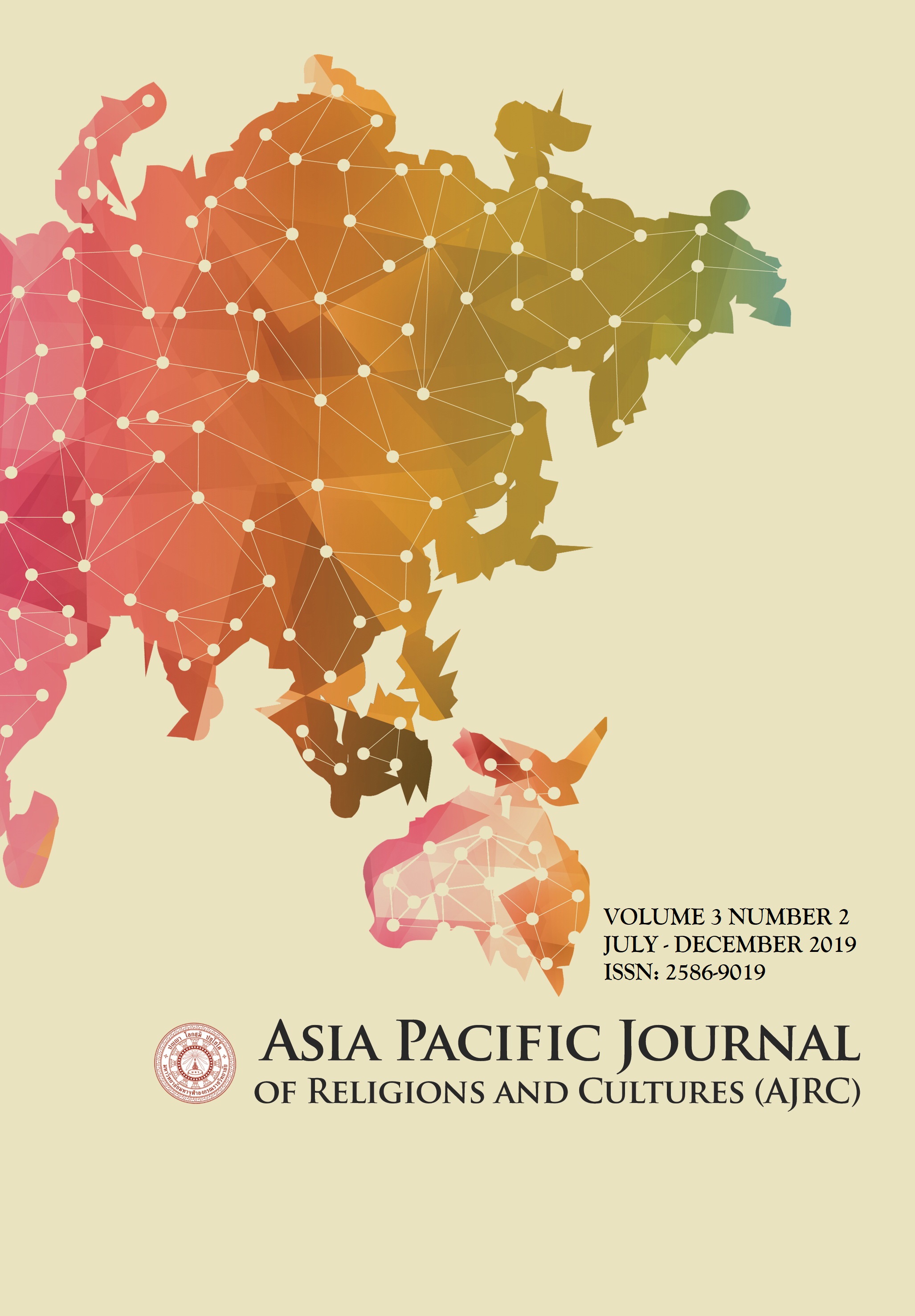Intercepting Stimulus-Organism-Response Model, Theory of Planned Behavior and Theory of Expectancy Confirmation in the Study of Smartphone Consumer Behavior: A Thai University Student Perspective
Main Article Content
Abstract
This research targets two very important objectives. First, it exploits the similarity structure of the theory of planned behavior, expectancy confirmation theory and the stimulus-organism-response (S-O-R) model, in broadening the social-psychological context in the use of the S-O-R model, and which renders the model being capable of embracing a broad-based, strategically competitive structure of business competition that centralizes on marketing mix strategy, customer value proposition and customer attitude. Second, through both explorative and explanatory efforts of an action learning and PDCA (Plan, Do, Check, Act) approach to business research, a S-O-R model, that is capable of explaining of the smartphone consumer behaviors, is corroborated, which highlights significant roles played by business model structure of variables, and organism variables constituting brand trust, customer satisfaction and brand equity, in explaining the variance of customer loyalty. Customer switching cost, which is a direct result of perceived customer value, is also shown to influence brand trust, significantly.
Article Details
References
Ajzen, I. (1988). Attitudes, personality, and behavior. Chicago, IL: Dorsey Press.
Ajzen, I. (1991). The theory of planned Behavior. Organizational Behavior and Human Decision Processes, 50: 179-211.
Almquist, E., Senior, J., & Bloch, N. (2016). The elements of value. Harvard Business Review, September Issue.
Apple (2017, 8 June). Shop for your favorite Apple products. Retrieved from https://www.apple.com/th-en/shop/browse/home_th_en.
Aung, Z.M., & Tan, C.C. (2016). Using the business model concept as a broad-based S-O-R (stimulating-organism-response) consumer behavior model for tourism industry: The case of Bagan, Myanmar. Journal of Mekong Societies, 12(2): 21-44.
Bangkok Post (2016, 22 Jan.). Thai users consumed by smartphones, Thailand. Retrieved from: http://www.bangkokpost.com/tech/local-news/835456/thai-users-consumed-by-smartphones.
Bloemer, J., & Kasper, H. (1995). The complex relationship between consumer satisfaction and brand loyalty. Journal of Economic Psychology, 16(2): 311-329.
Blythe, J. (2008). Consumer behavior. USA: Sage Publication Ltd.
Boland, T., & Fowler, A. (2000). A systems perspective of performance management in public sector organizations. The International Journal of Public Sector Management, 13(5): 417-446.
Brockbank, A., & McGill, I. (2007). Facilitating reflective learning in higher education. England: Open University Press.
Cohen, J. (1992). A power primer. Psychological Bulletin, 112: 155-159.
Cozby, P.C., & Bates, S.C. (2012). Methods in behavioral research. Singapore: NcGraw-Hill.
Deutsch, M. (1973). The resolution of conflict: Constructive and destructive processes. New Haven, CT: Uale University Press.
eMarketer (2016, 4 Mar.). M-commerce’s rapid growth is primarily coming from smartphones. Retrieved from: https://www.emarketer.com/Article/Mcommerces-Rapid-Growth-Primarily-Coming-Smartphones/1013909.
Fishbein, M., & Ajzen, I. (1975). Belief, attitude, intention and behavior: An introduction to theory and research. Reading, MA: Addison=Wesley.
Gupta, S., & Lehmann, D.R. (2003). Customers as assets. Journal of Interactive Marketing, 17(1): 9-24.
Kotler, P. (1994). Marketing management: Analysis, planning, implementation, and control. Englewood Cliffs, NJ: Englewood.
Krejcie, R., & Morgan, D. (1970). Determining sample size for research activities. Educational and Psychological Measurement, 30: 607-610. Hair, J.F.Jr., Black, W.C., Babin, B.J., Anderson, R.E., & Tatham, R.L. (2006). Multivariate data analysis. USA: Pearson Prentice Hall.
Hew, J.J., Badaruddin, M.N.B.A., & Moorthy, M.K. (2017). Crafting a smartphone repurchase decision making process: Do brand attachment and gender matter? Telematics and Informatics, 34: 34-56.
Levesque, T., & McDougall, G.H.G. (1996). Determinants of customer satisfaction in retail banking. International Journal of Bank Marketing, 14(7): 12-20.
Nenty, H.J. (2009). Writing a quantitative research thesis. International Journal of Education Science, 1(1): 19-32.
Ningsih, S.M., & Segoro, W. (2014). The influence of customer satisfaction, switching cost and trusts in a brand on customer loyalty – The survey on students as IM3 users in Depok, Indonesia. Procedia – Social and Behavioral Sciences, 143: 1015-1019.
Oliver, R.L. (1980). A cognitive model of the antecedents and consequences of satisfaction decisions. Journal of Marketing Research, 17: 460-470.
Oliver, R.L. (1999). Whence customer loyalty? Journal of Marketing, 63(3): 33-44.
Rao, A.R., & Monroe, K.B. (1988). The moderating effect of price knowledge on cue utilization in product evaluations. Journal of Consumer Research, 15(Sep.): 253-264.
Sekaran, U. (2000). Research Methods for Business. USA: Wiley.
Sheth, J.N., Sethia, N.K., & Srinivas, S. (2011. Mindful consumption: A customer-centric approach to sustainability. Academy of Marketing Science, 39: 21-39.
Singh, K. (1988). Consumer complaint intentions and behavior: Definitions and taxonomical issues. Journal of Marketing, 52(Jan): 93-107.
Smith, E.E. (1968). Choice reaction time: An analysis of the major theoretical positions. Psychological Bulletin, 69: 77-110.
Srivastava, M., & Kaul, D. (2016). Exploring the link between customer experience – loyalty – consumer spend. Journal of Retailing and Consumer Services, 31: 277-286.
Tan, C.C. (2016). Towards a phenomenological theory of corporate social responsibility and its spirited services. India: IMRF Publication House. ISBN 978-93-84124-99-1.
Thai PBS (2016, Dec.). Over 80% of Thais of 25-34 ages have smart phones. Retrieved from http://englishnews.thaipbs.or.th/80-thais-25-34-ages-smart-phones.
Woodruff, R.B, Cadotte, E.R., & Jenkins, R.L. (1983). Modeling Consumer satisfaction using experience-based norms. Journal of Marketing Research, 20 (August): 296-304.
Woodworth, R.S. (1918). Dynamic psychology. New York: Columbia University Press.
Woodworth, R.S. (1938). Experimental psychology. New York: Holt, Rinehart, & Winston.
Woodworth, R.S., & Schlosberg, H. (1954). Experimental psychology. New York: Holt.
Zboja, J.J., & Voorhees, C.M. (2006). The impact of brand trust and satisfaction on retailer repurchase intensions. Journal of Services Marketing, 20(5): 381-390.


